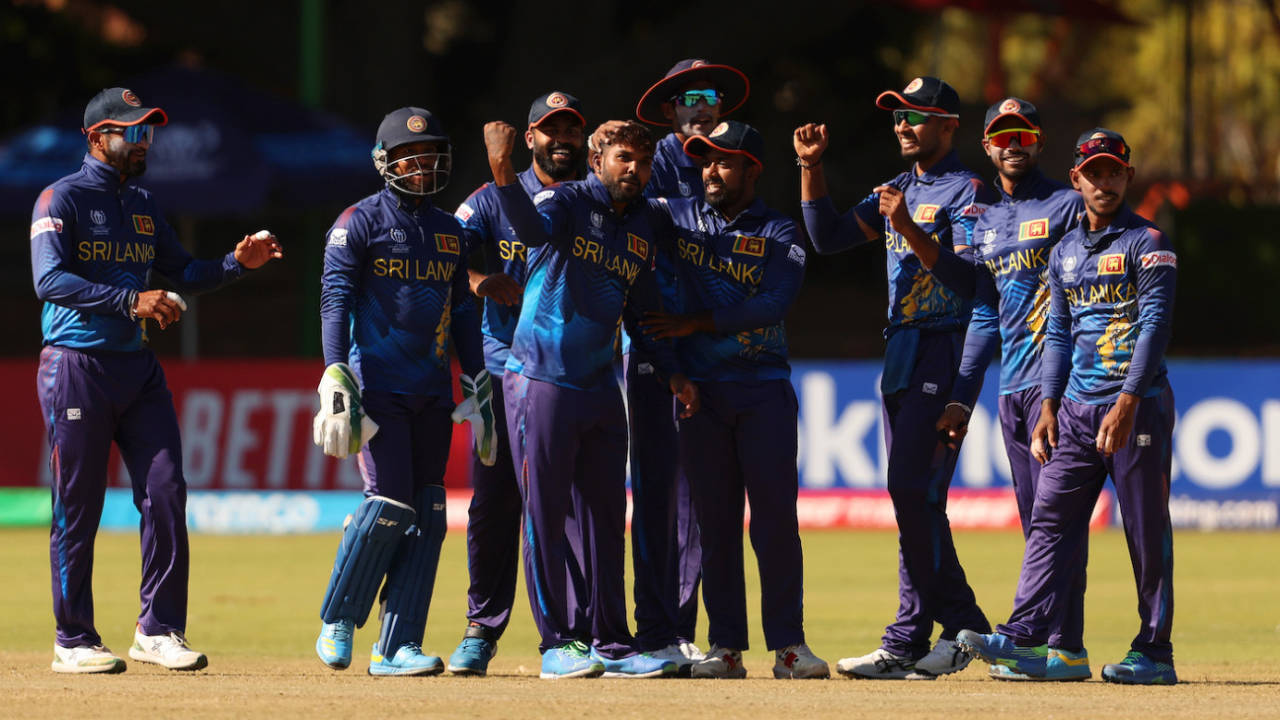Great variety in Hasaranga-led bowling attack
Through the course of the qualifier, Sri Lanka conceded a total of over 200 only once - in a dead rubber
against West Indies. Their attack has been tenacious over the past three weeks, the seamers frequently delivering new-ball breakthroughs, before
Wanindu Hasaranga and
Maheesh Theekshana go to work in the middle overs.
Part of their success has been about variety. In Hasaranga, they have a legspinner who, after years of T20 success, has shown signs he's cracking the 50-over format. He finished as the tournament's
top wicket-taker with 22 dismissals in seven innings. And if he doesn't get you, Theekshana's wicket-to-wicket mystery spin might.
Sri Lanka would clearly have liked to have Dushmantha Chameera fit for this series, but in his absence, left-armer
Dilshan Madushanka was excellent through the back-end of the tournament, and Lahiru Kumara made important contributions before he picked up an injury.
Because Sri Lanka's bowling tended to dominate the first 40 overs, their death bowling was not seriously tested. On the flatter surfaces they may encounter in India in the World Cup, the attack's ability to close out an innings will likely be crucial.
The middle-order remains brittle
In the group match
against Scotland, Sri Lanka lost their last six wickets for just 42 runs. In the Super Six game
against Netherlands, they were 96 for 6 at one stage. Against the same opposition in the final, they were 180 for 3 in the 36th over and then fell in a heap again, to be 233 all out in the 48th.
That Sri Lanka even had to play the qualifier is down largely to their
misadventures with the bat over the past four years, their scoring rates right through the innings frequently poor, and their middle order rarely putting consistent performances together.
Although they crossed 300 twice in this tournament (against UAE and Ireland), against the better attacks - the likes of Netherlands and Scotland - they made 213, 233, and 245 batting first. Essentially, facing poorer bowling than they can expect at the World Cup, Sri Lanka's batting frailties were still on display.
Theekshana now a key player in ODIs
Hasaranga is the Sri Lanka spinner who has made the big headlines over the last few years, but Theekshana has been an especially impactful ODI bowler. He's played only 22 games, so it's early days for Theekshana's career. But in this tournament, he showed why he is an exciting prospect, taking his wickets at an average of 12.23 and an economy rate of 4.02.
His most impressive performance, perhaps, came against Netherlands, as Sri Lanka sought to defend 213. Netherlands had been 127 for 4, before Theekshana claimed three wickets in the space of two overs to derail the chase. Theekshana then ended the tournament with three consecutive four-wicket hauls, having not conceded more than 43 in any of the qualifier matches.
Shanaka's batting form (or the lack of it)
Of Sri Lanka's middle-overs woes, what might worry them most is the form of their captain and primary finisher. In five innings in the qualifier, Shanaka's top score was 5. He didn't have particularly successful outings in the preceding series against Afghanistan and New Zealand either.
Shanaka has brought some stability to the ODI team since taking over as captain; however, in a World Cup year, Sri Lanka will hope he can recover form through the LPL (which starts at the end of this month), and the Asia Cup to follow. What he does have going for him are past performances in India. Though his overall ODI career batting average is 23.46 with a strike rate of 93.80, his best innings so far - an unbeaten
108 off 88 balls - came in Guwahati. Shanaka has also done well in India in the T20 format.
But both Shanaka and team management will feel much better if the runs start flowing soon.
Nissanka-Karunaratne provide hope at the top
With Danushka Gunathilaka likely out of the reckoning for the World Cup as he fights criminal charges in Australia, and Avishka Fernando struggling with injury over the past 12 months, Sri Lanka have not had a lot of luck at the top of the order. But with
Pathum Nissanka scoring 417 runs at an average of 69.50, and
Dimuth Karunaratne hitting 369 at an average of 61.50
in the qualifier, the one area of Sri Lanka's batting that had some consistency to it was the opening partnership.
Whether they can be as productive against higher-quality new-ball bowling remains to be seen. But they have done well enough to keep the pairing together.


